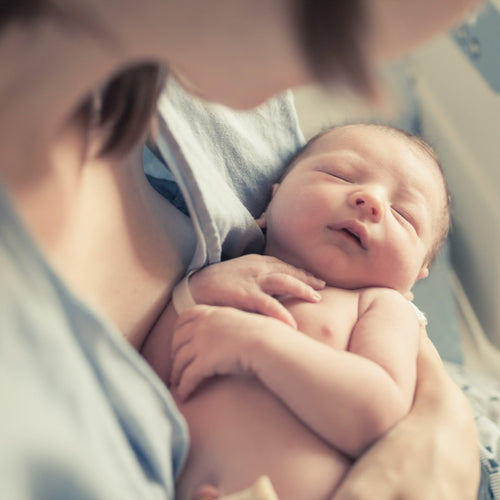Written by midwife and creator of Bumpnbub, Aliza Carr.
Tearing during childbirth is a topic most women don't want to think about when pregnant and preparing for a vaginal birth. Still, it is valuable to be aware of some information regarding perineal tears and ways to decrease your risk of tearing. The perineum is the area of skin between your vagina and anus where a tear may occur at birth. During birth, your perineum thins and stretches over your baby's presenting part, usually their head. Perineal tears are common, with over 85% of women experiencing perineal trauma, according to a review of perineal tears by the Australian Journal of General Practice. Although most perineal tears are sutured back together and heal well, the aim is to avoid a tear at birth for all women.
After your baby is born, your midwife or OB will assess your perineum with your consent and identify any tears that may be present. Perineal tears are classified from first-degree to fourth-degree. A first-degree tear is minor and involves only the first layer of skin, while a fourth-degree tear is more severe and involves the skin, muscle, and anal sphincter. Depending on the classification of the perineal tear, your healthcare provider may then recommend suturing the tear with dissolvable stitches so it heals well. It's important to note that most women do not feel a tear when it happens, as they are pushing their baby out.

What Can You Do To Prevent Tearing?
Antenatal Period
During the antenatal period, you should be informed by your healthcare provider on your overall risk of perineal injury with a vaginal birth. The Queensland Clinical Guidelines on perineal care discuss the importance of offering all women evidence-based antenatal education on measures to reduce their risk and severity of perineal injury, especially third and fourth-degree tears. Sometimes perineal tears are unavoidable, although perineal massage is one way to reduce your risk of needing stitches at birth.
Perineal massage is an action that can be performed in the antenatal period, which is supported by evidence to reduce your risk of third and fourth-degree tears at birth. Massaging the perineum helps to gently stretch the skin and tissue around the vagina before giving birth which can have several benefits for you. Research by Beckmann and Garret on antenatal perineal massage confirms that perineal massage does reduce the severity of perineal tears, although it makes minimal difference to the overall risk that women may tear. Perineal massage can also decrease perineal pain that women report in the postpartum period. Your healthcare provider should inform you of the risks, benefits and techniques of perineal massage. You can perform perineal massage from around 35 weeks pregnant, as directed by your healthcare provider; it is recommended five minutes, three times a fortnight (check your countries guidelines around this).

Labour And Birth
There are also several ways intrapartum, during your labour and birth, that can reduce your chance of tearing. A few of these measures may be performed by your midwife or OB routinely, although it is a good idea to inform your healthcare provider what your preference is. Remember mama - you can decline anything you wish to.
When bub's head is crowning, your midwife or OB may tell you to stop pushing or give small pushes to allow the perineum to stretch slowly, and their hand may be on bub's head as they are being born. Research by Albers and Borders on minimising perineal trauma state slowing the rate at which your baby's head and shoulders emerge can help prevent perineal injury.
The position you give birth in can also impact the likelihood of tearing. Soong and Barnes' study on maternal position and perineal trauma concluded the two positions that resulted in less suturing are side-lying and kneeling on all-fours. The least ideal position for perineal tears was laying on your back, as this puts more pressure on the perineum.
Warm compresses on your perineum during the pushing stage of labour can significantly reduce your risk of a third or fourth-degree perineal tear, according to a study by Aasheim on techniques during the second stage of labour for reducing perineal trauma.
Queensland Clinical Guidelines also state perineal massage performed by your healthcare provider during pushing may also decrease the risk of third and fourth-degree perineal tears. However, some women may not feel comfortable with this option, and it is not recommended for everyone.

Postpartum
If you have a perineal tear during the birth of your baby, the details will be disclosed to you during the debriefing process post-birth. This should include the nature of the injury, the treatment and follow-up and any effects on future births. Your postnatal care should involve educational measures on how to reduce pain and prevent infection of the perineal tear.
The below postpartum perineal care is recommended by the Queensland Clinical Guidelines:
- Hygiene; always wash the area regularly and pat dry, change your pad every 3-4hrs, shower at least once a day and monitor for any signs of infection.
- Analgesia; paracetamol, and anti-inflammatory painkillers such as ibuprofen work well for perineal pain. If you have a severe tear, your healthcare provider may also recommend stronger pain relief for you.
- Applying ice to your perineum will reduce any pain in the area and also help decrease swelling and bruising after birth. Apply ice packs for 10-15mins at a time for the first 24-72hrs after birth.
- Side-lying is recommended to promote perineal recovery, as laying on your side reduces swelling and fluid pooling in the perineum.
- Your healthcare provider may recommend antibiotics if you have had a third or fourth-degree tear to help reduce the risk of infection.
- Consult a women's health physiotherapist before commencing any pelvic floor exercises or strenuous physical exercise.
- Ensure you have follow-up organised for six weeks postpartum to assess wound healing of your perineum.
~Always chat with your health professional if you have any questions or concerns.~

